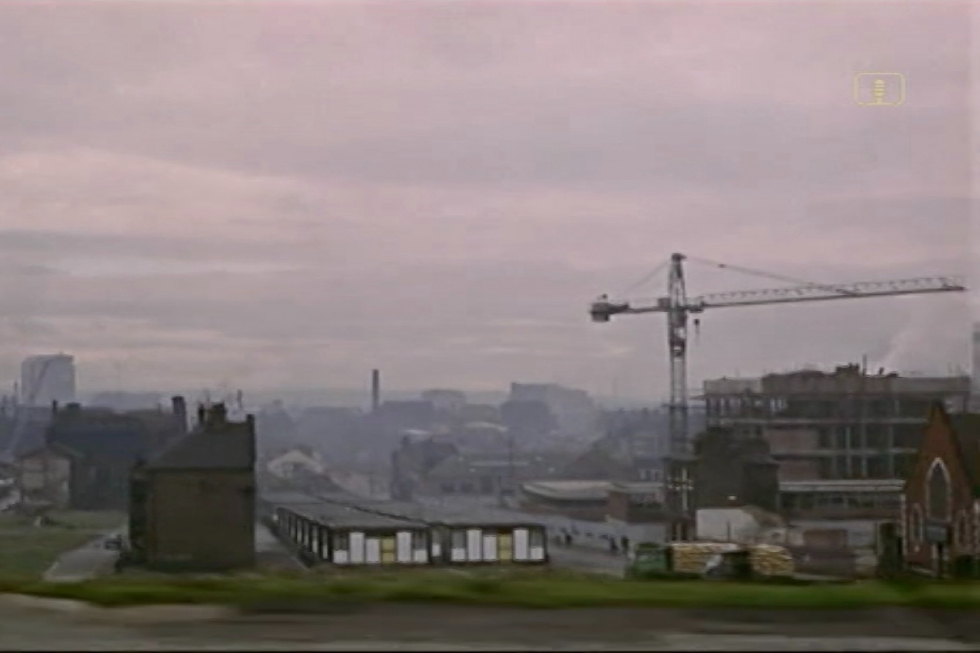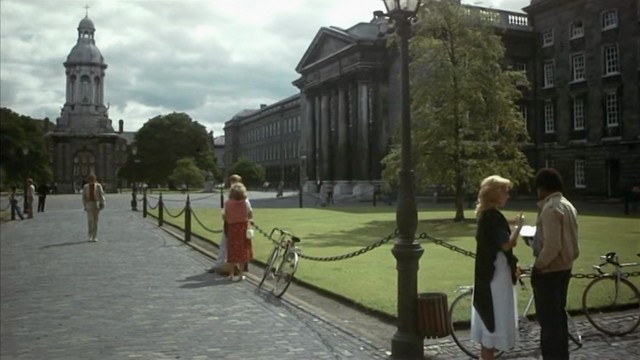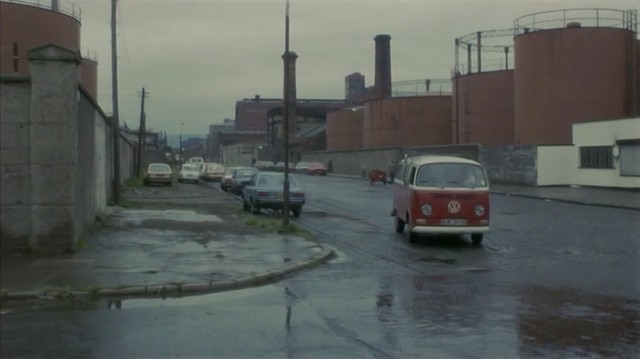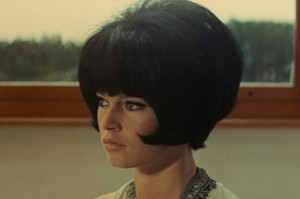The Mediated City: The Imaging of Liverpool in Film

“Urban landscape and architecture are integral.” Anthony Ellis on how film can fix in our minds and memory a sense of place…
General views are one of the more unusual aspects of filmmaking. They’re shots that set the scene and establish the location in which the action is taking place. Often this is a town or city, but it could be a building, or even a room. These images of place are often interchangeable across different film works, bought in as stock photography, for a corporate film or movie. Hence, general views will often include famous landmarks and perpetuate stereotypical views of a city. A similar imaging of place is outlined by Eisenstein in the opening chapter of The Film Sense, where he suggests that imaging is central to how we remember the streets of a city. Discussing his own difficulty in recalling the numerically named streets of New York, such as Forty-Second Street, he explains how he ‘had to fix in memory a set of objects characteristic of one or another street… the theatre, stores and buildings’ to help form an image of place. Gradually, an overall image of the street would emerge, that he could bring to mind.
Liverpool has a rich history in film and has been represented on the screen many times through these general views of place. There is even a council department, the Liverpool Film Office, that is dedicated to promoting the use of the city as a location. On its website, a section entitled ‘General Views’ is where prospective filmmakers can find images of key landmarks from the city, such as Lime Street Station and the Liver Building. Across these appearances in film, various images of the city are formed.

In the 1969 film The Reckoning, underrated screen star Nicol Williamson plays Michael Marler, a hard as nails executive who has long since upped sticks and moved south, working in London and living in leafy Berkshire, determined to leave his Liverpudlian roots behind. In the capital, he has found success and a lifestyle to match it, but he is reluctantly drawn back to the city of his birth after learning of his father’s illness. Once back home, he becomes embroiled in the social and political complexities of his past life. There, Liverpool acts as a backdrop for social tensions to play out across class, the lives of first-generation Irish immigrants in the city, and the North-South divide.
The imaging of Liverpool in The Reckoning, by acclaimed cinematographer Geoffrey Unsworth, is of a place in transition. The rundown Georgian terraces and sweeping long shots of the docks are contrasted with the modern high rises emerging across the city. This compares to a representation of London that has seemingly already been through this transition, however flawed that idea may be, with sleek Modernist office blocks and Marler’s own impressive, detached house representing place. It’s a selective imaging of the two cities, seemingly designed to mirror the identity crisis of the central character.

Perhaps the most striking image of Liverpool is a view a couple of miles from the centre, looking down into the city, with neglected terraces and derelict land in the foreground, set against the silhouette of the futuristic radio tower in the distance. On a wall, someone has daubed ‘No Popery,’ in a distillation of the religious and cultural tensions that existed in the city during this period. Here, within the perimeters of a single shot, two splintering urban forms are pitted against one another. The terraced dwellings, left at the back of the queue of modernity, waiting for the tides of economics and politics to change, whilst the radio tower symbolises a new wave of architecture sweeping across urban centres, in the vanguard and at the front of that same queue.
Through the mirroring of urban and psychological terrain, the film presents what could be described as a heightened form of Psychogeography, the concept whereby emotions and behaviour are affected by geographical location, as proposed by theorist Guy Debord in the mid-fifties. Marler traverses his identity crisis through the journeys that he takes in and between his birthplace and his adopted home: the imaging of the cities and the network of roads that connect them, parallel Marler’s neurosis, this being a product of the social, economic and political space that is unresolved between Liverpool and London, north and south.
This neurosis is let loose as he drives his prized Jaguar, the status symbol that encapsulates the dichotomy at the heart of his character, in a careering and dangerous manner along the streets of both cities. Roads, in turn, are a central aspect of the film’s representation of place. One striking image is of the A580 turn off sign for Liverpool and Southport, as Marler races down the motorway frantically, his anxiety ratcheting up as he approaches home. The anger and sadness that Marler feels, that he is unable to fully acknowledge, repeatedly unfolds as a destructive rage behind the wheel of the Jag.

By contrast, the 1983 film adaption of Willy Russell’s Educating Rita, starring Julie Walters and Michael Caine, has a radically different approach to imaging the city. The central character, Rita, works as a hairdresser whilst studying at university one day a week, as part of an open access course. The film follows her as she is enriched by the experience of university life, which opens doors to new friends and a newly found self-confidence that, conversely, creates tension with her family and sadness regarding the life that she is leaving behind.
The film is set in Liverpool but shot in Dublin and so the general views of the city show, amongst other places, Trinity College and Sir John Rogerson’s Quay, which are notable Dublin landmarks. Dublin was dressed to make it appear more British with portable props, such as red phone boxes, included to reinforce the image of place. There are many similarities between the cities, in the composition of the urban landscape, such as notable Georgian architecture, Victorian terraces, and the docks.

It is, though, a strange and uncanny amalgamation of place. To see Liverpool represented by another city, when the urban landscape and architecture of the city are so integral to the identity of the place, is disconcerting, even when represented by a city with close historical ties, such as Dublin. The urban landscape of Dublin and the voices of Liverpool seem somehow out-of-step.
Returning to Eisenstein, what image of place do we form across the multitude of these general views: are we able to navigate the Liverpool that emerges across the array of imaging? Think of the Liver Building, featuring on so many sport show intros and soap opera title sequences, broadcast across the nation, and then that same building in cinemas worldwide, in a different complex. The saturation of the image of the building to such an extent that its function is overwhelmed by its appearances as a sign. An imaging that exists across global electronic networks and the screens of the world, generated through the clandestine operations of F-stops and editing suites: the mediated city.
Anthony Ellis
Note: Information on film locations was taken from the Reelstreets.com website
Stills from top: 1–3: The Reckoning (1969. Director: Jack Gold. Production Company: Columbia Pictures). Images 4–5: Educating Rita (1983. Director: Lewis Gilbert. Production Company: Acorn Pictures)





